Inhibition of Spleen Tyrosine Kinase Potentiates Paclitaxel-Induced Cytotoxicity in Ovarian Cancer Cells by Stabilizing Microtubules
- PMID: 26096845
- PMCID: PMC5257279
- DOI: 10.1016/j.ccell.2015.05.009
Inhibition of Spleen Tyrosine Kinase Potentiates Paclitaxel-Induced Cytotoxicity in Ovarian Cancer Cells by Stabilizing Microtubules
Abstract
Resistance to chemotherapy represents a major obstacle for long-term remission, and effective strategies to overcome drug resistance would have significant clinical impact. We report that recurrent ovarian carcinomas after paclitaxel/carboplatin treatment have higher levels of spleen tyrosine kinase (SYK) and phospho-SYK. In vitro, paclitaxel-resistant cells expressed higher SYK, and the ratio of phospho-SYK/SYK positively associated with paclitaxel resistance in ovarian cancer cells. Inactivation of SYK by inhibitors or gene knockdown sensitized paclitaxel cytotoxicity in vitro and in vivo. Analysis of the phosphotyrosine proteome in paclitaxel-resistant tumor cells revealed that SYK phosphorylates tubulins and microtubule-associated proteins. Inhibition of SYK enhanced microtubule stability in paclitaxel-resistant tumor cells that were otherwise insensitive. Thus, targeting SYK pathway is a promising strategy to enhance paclitaxel response.
Copyright © 2015 Elsevier Inc. All rights reserved.
Figures
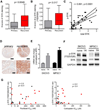
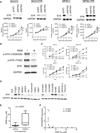
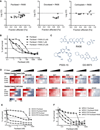
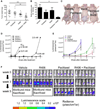
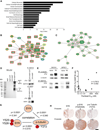

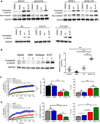
Comment in
-
Spleen Tyrosine Kinase Confers Paclitaxel Resistance in Ovarian Cancer.Cancer Cell. 2015 Jul 13;28(1):7-9. doi: 10.1016/j.ccell.2015.06.008. Cancer Cell. 2015. PMID: 26175410
References
-
- Abubaker K, Luwor RB, Escalona R, McNally O, Quinn MA, Thompson EW, Findlay JK, Ahmed N. Targeted Disruption of the JAK2/STAT3 Pathway in Combination with Systemic Administration of Paclitaxel Inhibits the Priming of Ovarian Cancer Stem Cells Leading to a Reduced Tumor Burden. Front Oncol. 2014;4:75. - PMC - PubMed
-
- Braselmann S, Taylor V, Zhao H, Wang S, Sylvain C, Baluom M, Qu K, Herlaar E, Lau A, Young C, et al. R406, an orally available spleen tyrosine kinase inhibitor blocks fc receptor signaling and reduces immune complex-mediated inflammation. J Pharmacol Exp Ther. 2006;319:998–1008. - PubMed
-
- Buchner M, Fuchs S, Prinz G, Pfeifer D, Bartholome K, Burger M, Chevalier N, Vallat L, Timmer J, Gribben JG, et al. Spleen tyrosine kinase is overexpressed and represents a potential therapeutic target in chronic lymphocytic leukemia. Cancer Res. 2009;69:5424–5432. - PubMed
-
- Chang W, Gruber D, Chari S, Kitazawa H, Hamazumi Y, Hisanaga S, Bulinski JC. Phosphorylation of MAP4 affects microtubule properties and cell cycle progression. J Cell Sci. 2001;114:2879–2887. - PubMed
Publication types
MeSH terms
Substances
Grants and funding
LinkOut - more resources
Full Text Sources
Other Literature Sources
Medical
Molecular Biology Databases
Miscellaneous

